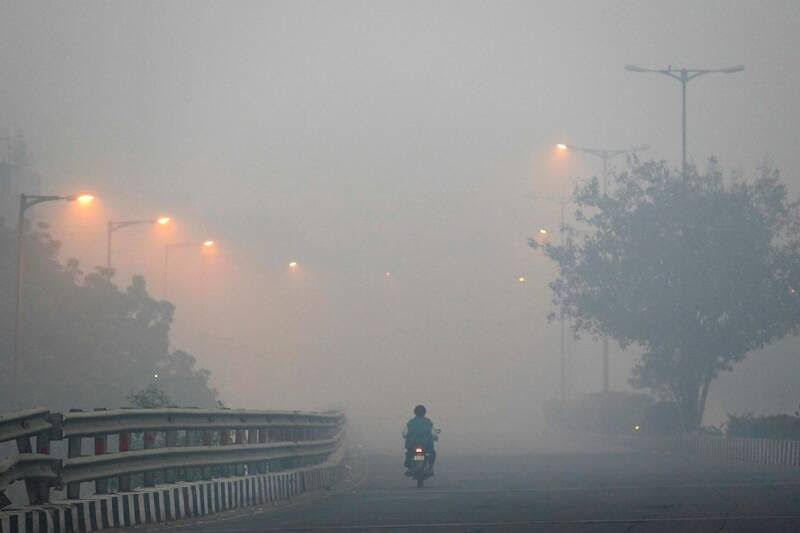People are suffering from itchy throats and watery eyes after the increase in the AQI of the capital
New Delhi: The capital is slipped from a 'severe' Air Quality Index (AQI) to its 'hazardous' category this morning, followed by the celebration of Diwali night.
The city has covered with a blanket of severe pollution rates, low-temperature wind. The AQI reached up to 384 last night.
According to the AQI report, the concentrations of Particulate Matter (PM) 2.5 stood at 999 per cubic metre at Jawaharlal Nehru stadium in the city on Friday morning - against the WHO's prescribed safe limit of 25.
The neighbouring cities of the capital are also suffering from the increase in pollution rates after the festival. Faridabad (424 AQI), Ghaziabad (442 AQI), Gurgaon (423 AQI) and Noida (431 A) also recorded 'severe' air quality with cracker bursting peaking after 9 pm.
Earlier, Delhi Govt. banned firecrackers, including the green ones. Despite the ban, several people were bursting firecrackers, contributing to the degradation of the air quality.
According to the ANI report, the bursting of crackers further aggravated the degrading air quality of the capital, amid the increased contribution from farm fires and stubble burning.
Also, the report shows, many people are suffering from itchy throats and watery eyes, as a layer of smog, the first episode this season, lingered over the region after the thick smog layer was shrouded over the city.
As per the Centre-run System of Air Quality and Weather Forecasting And Research (SAFAR), the air quality is not likely to improve until Sunday evening (November 7). The improvement would, however, just fluctuate in the ''Very Poor'' category.
According to the experts, the sky will be covered by smog from now onward. The AQI will remain to be at its poor category. It might affect the health of the citizens.





The Brief. Sign up to receive the top stories you need to know right now.